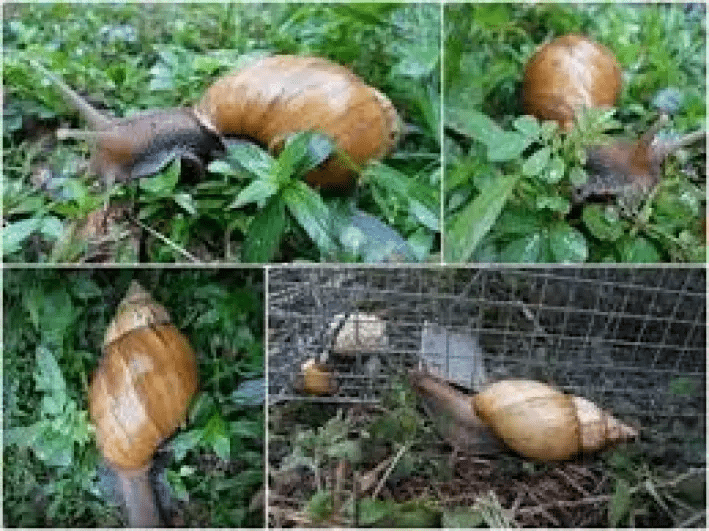Snail production, also known as heliciculture, is a fascinating and sustainable agricultural practice that involves the controlled breeding and cultivation of snails for various purposes, primarily for human consumption. This innovative agricultural endeavor is gaining popularity due to the numerous benefits it offers.
At its core, snail production is the art and science of nurturing snails in a controlled environment, ensuring optimal conditions for their growth and reproduction.
These gastropods are not only intriguing creatures with their distinctive spiral shells but also represent a valuable source of protein, essential minerals, and vitamins.
In snail farming, meticulous attention is given to creating a habitat that mimics the natural conditions favorable for snail development. This includes maintaining appropriate levels of humidity, temperature, and soil quality.
Farmers often construct snaileries which are specially designed spaces or enclosures that are meant to provide a conducive environment for these slow-moving creatures to thrive.
One of the significant advantages of snail production lies in its sustainability and low environmental impact. Snails are highly efficient in converting feed into body mass, requiring less input compared to traditional livestock.
Additionally, they are known for their ability to thrive on a variety of feed sources, including organic waste, making them eco-friendly contributors to the agricultural ecosystem.
From a nutritional standpoint, snail meat is a rich source of high-quality protein, low in fat, and contains essential minerals such as iron, calcium, and phosphorus. Incorporating snail production into agriculture not only diversifies protein sources but also presents a viable economic opportunity for farmers.
Now let us discuss about the different systems of snail production in snail business as well as the advantages and disadvantages attached to them.
As a prospective snail farmer, one of the first and major things to consider before venturing into snail farming in any part of the world is your snailery. Therefore, In constructing your snailery otherwise known as the snail house, certain factors must be considered.
For instance, the type and dimensions of your snailery or snaileries will largely depend on the snail breeding system you have decided to engage in, the space available to you and of course the quantity of snails you intend to rear. Meanwhile, as far as housing is concerned, your snail farm could be intensive, semi-intensive, or extensive.
1. Extensive System of Snail Production (Outdoor)

Advantages of Extensive System of Snail Production
- The condition of the environment closely resembles the natural habit of snails compared to other systems.
- Low labour and low general management input i.e. inexpensive to maintain
- The farmer needs not purchase feed because it is already available in the snailery.
- There is no restriction on the movement of the snails.
- Examples of intensive system of snail production equipment’s include and not limited to: Basket, Old Tyres, Used drums, Used Tanks, Low Fenced Pens, High Fenced Pens, etc.
Disadvantages of Extensive System of Snail Production
- Little control over the performance of snails
- It requires a lot of land compared to others of production.
- Record keeping is difficult.
- Poor disease management.
- The snails are exposed to predators’ attacked (e.g. soldier ants)
- Mortality rate could be higher than other systems.
- Semi-Intensive System
- The system is like the extensive system except that the snails are supplied
- with feeds besides what is grown in the snailery
Read Also: Predators, Parasites and Diseases of Snail
2. Semi-Intensive System
This system combines both the intensive and extensive system of farming. This system gives them a feeling of their natural habitat where the snail farmer has trees, fruits and vegetables planted in the snails’ farm or pen yet in a controlled environment unlike in the wild where there’s no control.
Moreover, external and snail formulated feeds can still be supplied to them outside the natural snail feed already in the snail housing for them.
3. Intensive System of Snail Production (Indoor)

In the intensive System, the Snails are only fed with feeds brought to the snailery.
Advantages of Intensive System of Snail Production
- It is good for backyard or commercials farming.
- Record on performance of the snails can be kept.
- There is proper control over disease and predators
- The management practices are simple.
- It can be practiced both in urban and rural area.
- The growth rate could be influenced by introducing formulated ration.
- The mortality rate is low.
Disadvantages of Intensive System of Snail Production
The snails can be stolen at once because the confinement which is very difficult in extensive system because the snails are scattered.
